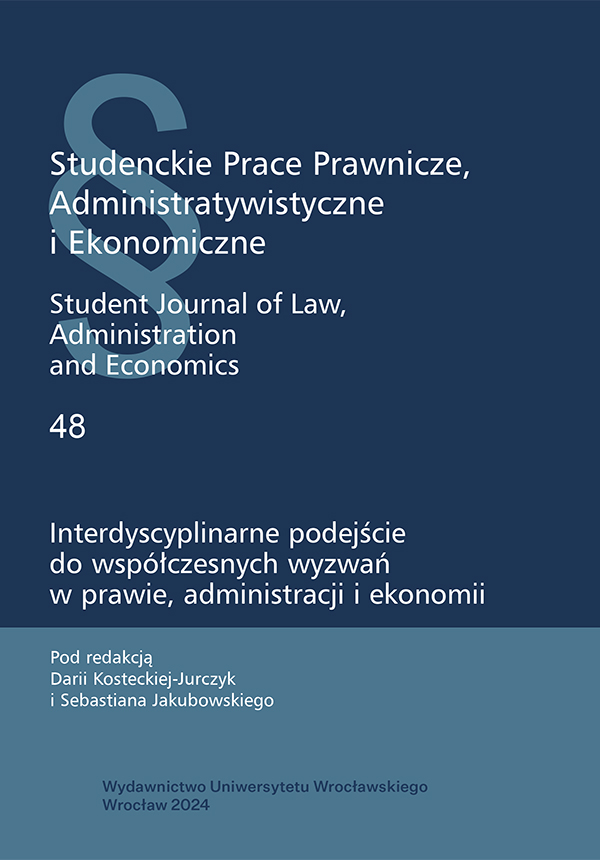

Articles

The purpose of this article is to outline the situations that may create a permanent establishment of a foreign entity in Poland as a result of cooperation with a Polish taxpayer, in light of the commentary on the OECD Model Tax Convention from 2017. In particular, the article aims to assess which activities of the Polish entity in relation to the related foreign entity may go beyond a preparatory and auxiliary character. The author undertakes an examination of the impact of specific OECD comments on the current assessment of these activities, providing characteristic examples of actions that could give rise to a permanent establishment in Poland. The article also addresses the debatable issue of interpreting specific changes to the Convention, as well as its commentary, in applying the definition of a permanent establishment in double taxation avoidance agreement.
Ustawa z dnia 15 lutego 1992 roku o podatku dochodowym od osób prawnych (tekst jedn. Dz.U. z 2022 roku poz. 2587).
OECD, Action Plan on Base Erosion and Profit Shifting, Paris 2013, http://dx.doi.org/10.1787/ 9789264202719-en.
OECD, Preventing the Artificial Avoidance of Permanent Establishment Status, Action 7 — 2015 Fi- nal Report, Paris 2015, https://doi.org/10.1787/9789264241220-en.
OECD, Model Tax Convention on Income and on Capital 2014 (Full Version), Paris 2015, http://dx.doi.org/10.1787/9789264239081-en.
OECD, Addressing the Tax Challenges of the Digital Economy, Action 1 — 2015 Final Report, OECD/G20 Base Erosion and Profit Shifting Project, Paris 2015, http://dx.doi.org/10.1787/9789264241046-en.
OECD, Model Tax Convention on Income and on Capital: Condensed Version 2017, Paris 2017, http://dx.doi.org/10.1787/mtc_cond-2017-en.
Dmoch W., Podatek dochodowy od osób prawnych. Komentarz, wyd. 10, Warszawa 2022.
Jakubowska D., Zakład podatkowy w świetle Konwencji Modelowej OECD z 2017 r., „Monitor Podatkowy” 2019, nr 3, s. 25–32.
Komentarz do ustawy o podatku dochodowym od osób prawnych, red. W. Modzelewski, J. Pyssa, wyd. 21, Warszawa 2023.
Regulacje w zakresie unikania opodatkowania. Komentarz praktyczny, red. A. Mariański, wyd. 1, Warszawa 2020.
Wyrok Naczelnego Sądu Administracyjnego z dnia 17 maja 2013 roku, II FSK 1894/11, Legalis nr 763096.
Wyrok Wojewódzkiego Sądu Administracyjnego w Gliwicach z dnia 31 stycznia 2022 roku, I Sa/Gl 1340/21, Legalis nr 2661267.
Wyrok Wojewódzkiego Sądu Administracyjnego we Wrocławiu z dnia 10 października 2023 roku, I SA/Wr 261/23, Legalis nr 2994627.
Interpretacja indywidualna Dyrektora Krajowej Informacji Skarbowej z dnia 13 czerwca 2022 roku, znak: 0111-KDIB1-2.4010.97.2022.2.BD, https://eureka.mf.gov.pl/informacje/podglad/494471.
Interpretacja indywidualna Dyrektora Krajowej Informacji Skarbowej z dnia 17 października 2022 roku,
znak: 0111-KDIB1-2.4010.472.2022.2.MZA, https://eureka.mf.gov.pl/informacje/podglad/514304.
Interpretacja indywidualna Dyrektora Krajowej Informacji Skarbowej z dnia 29 maja 2023 roku, znak: 0114-KDIP2-1.4010.229.2023.2.JC, https://eureka.mf.gov.pl/informacje/podglad/546332.
Interpretacja indywidualna Dyrektora Krajowej Informacji Skarbowej z dnia 25 lipca 2023 roku, znak: 0114-KDIP2-1.4010.239.2023.2.OK, https://eureka.mf.gov.pl/informacje/podglad/554863.
Interpretacja indywidualna Dyrektora Krajowej Informacji Skarbowej z dnia 19 października 2023 roku, znak: 0114-KDIP2-1.4010.430.2023.4.MW, https://eureka.mf.gov.pl/informacje/podglad/566741.